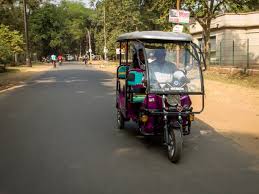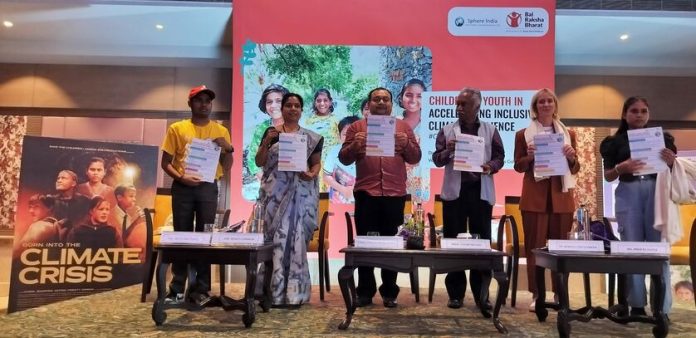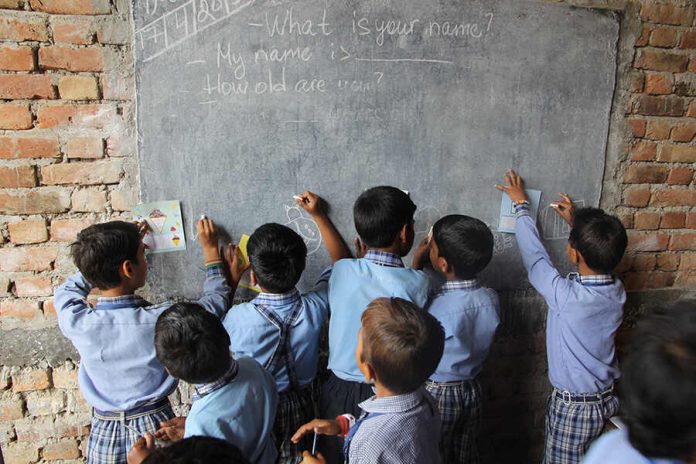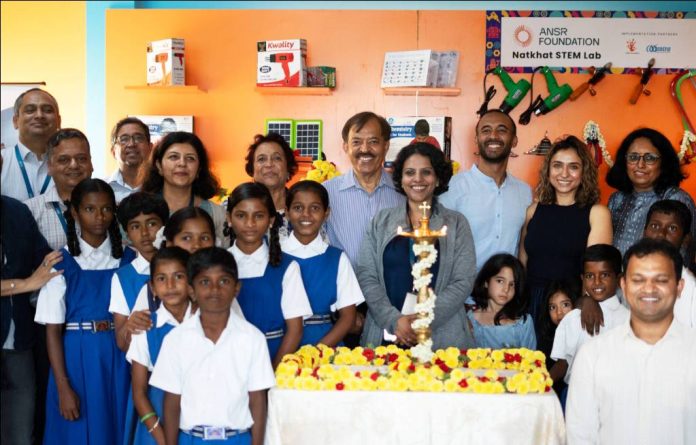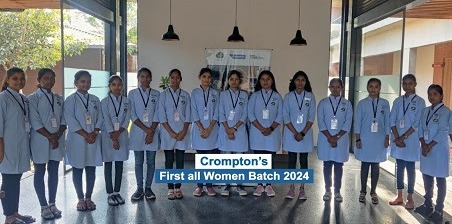Monitoring Application Developed to Aid Cyclone Dana Mitigation Efforts
Cyclone Dana is forming over the Bay of Bengal, with a low-pressure system expected to intensify into a depression by October 24, 2024. This cyclone is projected to bring heavy rainfall to regions such as Odisha, southern West Bengal, and nearby coastal areas, with landfall anticipated between October 24 and 26, and the heaviest rainfall expected around October 24.
To provide critical insights about the movement of the cyclone to authorities and the public at large, Esri India has launched DANA CYCLONE MONITORING APPLICATION today. This application integrates the data coming from IMD weather bulletins, Windy’s dynamic data, and Indo ArcGIS Living Atlas and makes it available in the form of Esri’s live dynamic dashboards. The progress of the cyclone can be tracked using Esri’s configurable dashboards that enable the authorities involved in disaster management efforts to visualize data, communicate information, and analyze real-time data on a single screen.
Agendra Kumar, Managing Director, Esri India, said “Disaster preparedness helps protect lives, property, and livelihoods, while ensuring faster recovery and minimizing long-term impacts. Live data during disasters like Cyclone Dana enable the authorities to make critical decisions, such as where to issue evacuation orders, how to mobilize resources, and more. This ensures more effective monitoring and disaster response, ultimately saving lives and resources. We are keen to support these objectives with the Dana Cyclone Monitoring Application. This app can also be used by the public so that they can be better prepared.”
Disclaimer: This media release is auto-generated. The CSR Journal is not responsible for the content.
E-Rickshaws for Community Welfare, Channelling ₹50 Lakhs into Local Support
Udaan E Vehicles, a leader in the electric vehicle industry, has announced a significant step in its corporate social responsibility (CSR) initiatives by distributing 20 premium e-rickshaws powered by Bilon. This initiative is aimed at supporting local communities by providing reliable transport services, particularly for the elderly and disabled.
The selected beneficiary families for this distribution were local temples, where the e-rickshaws will serve as shuttle services, ensuring that individuals with mobility challenges can access essential services and participate in community activities. This thoughtful allocation reflects Udaan E Vehicles’ commitment to enhancing the quality of life for those who need it most.
Mitul Batraa, Co-founder of Udaan E Vehicles, stated, “We believe in the transformative power of sustainable transportation. By providing these e-rickshaws, we aim to empower communities and improve accessibility for the elderly and disabled. Our commitment to social responsibility goes hand in hand with our mission to create a greener future.”
The total investment made by Udaan in this CSR activity amounts to ₹50 lakhs, emphasizing the company’s dedication to making a tangible difference in society. Udaan E Vehicles also has plans for further CSR activities in the near future, focusing on enhancing community welfare and promoting sustainable practices.
This initiative aligns with Udaan E Vehicles’ vision of fostering a sustainable and inclusive environment, as the company continues to lead the charge in the electric vehicle sector.
Disclaimer: This media release is auto-generated. The CSR Journal is not responsible for the content.
Bal Raksha Bharat & Sphere India Empower Children and Youth to Lead Climate Action
Aligned with Prime Minister Narendra Modi’s 10-Point Agenda on Disaster Risk Reduction (DRR), emphasising a holistic approach to building resilience, reducing disaster risks, and fostering sustainable development., Bal Raksha Bharat and the Sphere India Academy have integrated on the #GenerationHope Campaign to accelerate inclusive climate resilience by empowering youth and children in India and everywhere.
The event, hosted by Bal Raksha Bharat, was attended by notable dignitaries from key disaster management agencies of India like NIDM, NDMA, DDMA. The keynote address was delivered by Shri Anil Sinha, former Executive Director, National Institute of Disaster Management (NIDM). A special address to children was delivered by Professor Vinod C. Menon, Founder Member of the National Disaster Management Authority (NDMA). Dr. Mukta Girdhar Senior Consultant, Delhi Disaster Management Authority & Ms. Rebecca von Schreeb, Second Secretary, Embassy of Sweden, joined a panel discussion moderated by Santanu Chakraborty, CEO, Bal Raksha Bharat. Representatives from Sphere India Academy, Government Officials and other Civil Society Organisations were also present at the event.
Through a series of online and offline actions, and a consultation of 150 plus children from eight regions (Assam, Bihar, Delhi, Karnataka, Madhya Pradesh, Odisha, Rajasthan, Telangana and West Bengal), children manifested their life experiences to define solutions and demands that was presented as a charter. This charter speaks about Conservation, Preservation and Collective Action and amplifies voices of the younger generation on critical climate discussions, and was presented at the Asia-Pacific Ministerial Conference on Disaster Risk Reduction (APMCDRR). The same will be presented at the COP29 later this year.
Citing the UN Secretary General, Shri Anil Sinha said, “The era of global warming is over but the era of global boiling has begun.” He also reiterated that Disaster risk reduction should begin at an early stage in life and integrated in children’s development journey “This begins at home, with children as the greatest change agents and schools a milestone of development,” he concluded.
Professor Vinod Menon added by saying that humanity is going through a catastrophe in the face of climate crisis and the #GenerationHope campaign is taking the natural wisdom of children to secure the future of humanity. We have to leave a legacy behind, and that calls for courage of conviction.
He highlighteds the importance of youth engagement in addressing climate change, while building resilience through education, collective action, and collaboration. It serves as a platform for young people to share their stories, ideas, and solutions to some of the world’s most pressing environmental & climate challenges.
Dr. Mukta Girdhar cited the importance of technology for disaster preparedness and mitigation and emphasised on how we need to equip and encourage the innovative minds of today’s children to bring in more pathbreaking solutions.
Sparking critical conversations around resilience, policy action, and the role of young people in driving change, the campaign also offered fresh insights into the climate crisis from the perspective of the youngest stakeholders to co-create solutions. The event also featured the launch of the global film Born Into The Climate Crisis, which highlights the human toll of climate disasters and the urgent need for action.
“Our children and youth are the driving force behind climate action. Through this campaign, we are working for and with children to galvanize this platform to lead the conversation on building a sustainable future,” said Santanu Chakraborty, CEO, Bal Raksha Bharat. “Their ideas and contributions will guide our work and bring us closer to a world where climate resilience is a reality for all.”
The Generation Hope campaign reinforces the commitment of Bal Raksha Bharat and Sphere India Academy to fostering meaningful participation of youth in climate discussions and action. This initiative not only aims to raise awareness but also to inspire change at local, national, and global levels.
Disclaimer: This media release is auto-generated. The CSR Journal is not responsible for the content.
‘Srijangan’ CSR Initiative to Illuminate Rural Education in Hingalganj this Diwali
This Diwali, while many prepare to light diyas and decorate their homes, Embee Software Pvt Ltd is setting a different kind of light in motion—one that shines on the future of children in Hingalganj, West Bengal. The launch of the ‘Srijangan’ initiative marks a heartfelt commitment to transforming education for children aged 8 to 13, turning aspirations into realities.
Sudhir Kothari, Managing Director of Embee Software, shares a vision that resonates deeply: “We want to create community-driven learning hubs that can be replicated in any region, serving as a model for transformative education.” It’s a mission fueled by the belief that every child holds potential waiting to be nurtured, much like a plant yearning for sunlight.
Utsav Kothari, VP of Data and Application Business at Embee, underscores the goal of empowering children: “We aim to equip them with the skills they need for success, while also respecting the wisdom of older generations.” In a world where knowledge is rapidly evolving, this blend of youthful curiosity and seasoned insight could be the perfect recipe for success.
Imagine a child, eyes bright with curiosity, stepping into one of the five village learning centers. These centers, equipped with digital libraries, offer a treasure trove of resources. Here, trained facilitators guide students through engaging, hands-on activities, igniting creativity and practical skills that are often overlooked in traditional education. It’s a space where learning becomes an adventure, and every question is met with encouragement—because let’s be honest, who doesn’t love a good “why?”
What makes ‘Srijangan’ truly special is its innovative inclusion of older community members through ‘Inter-Generational Learning Centers.’ This initiative is like adding a pinch of wisdom to a recipe—essential for flavor. By integrating the knowledge and stories of elders into the learning process, the project strengthens bonds within the community. It’s a reminder that education is not just about books; it’s about weaving the fabric of shared experiences across generations.
As ‘Srijangan’ takes root, it stands as a beacon of hope, illuminating the path for many children who might otherwise remain in the shadows of educational inequality. This Diwali, Embee Software is not just celebrating the triumph of light over darkness; it’s lighting the way to a brighter future for the children of Hingalganj—one filled with possibilities, dreams, and a few good laughs along the way. After all, education is serious business, but who says we can’t have a bit of fun while doing it?
Disclaimer: This media release is auto-generated. The CSR Journal is not responsible for the content.
CSR Foundation launched in Bengaluru to empower underrepresented communities
Bengaluru, India: ANSR, the market leader in setting up global centers for the world’s top enterprises, is thrilled to launch the ANSR Foundation.Starting with a series of programs forchildren and young adults, the foundation’s long-term goal is to impact economicdisparityand gender equality while fostering a new generation of technology trailblazers.
Since its founding, ANSR has created over 150,000 jobs in India and brought in more than $2B in investments. The company has a strong track record of increasing participation of women in the workforce and to creating a more equitable and inclusive tech ecosystem.
“ANSR Foundation is committed to creating a world where we can dismantle barriers for underserved communities. Through the Foundation we are taking impactful steps to empower today’s youth and both men and women by providing them with scholarships and resources to pursue education in technology, regardless of background and gender,” said Lalit Ahuja, CEO of ANSR.
The ANSR Foundation isembarking on a variety of programs, including:
• STEM-dedicatedclassrooms:Engaging classrooms with STEM-focused programs and teachers have been set up in selected Bengaluru schools in collaboration with NGO partners Mantra4Change and Let’s Do Some Good.This hands-on approach aims to provide young people with a more innovative future and the skills and confidence neededto thrive in the tech industry.
• Scholarships: ANSR Foundation has recently with the prestigious Birla Institute of Technology and Science (BITS) Pilani and has created scholarships and a PhD fellowship for students, a commitment spearheaded by ANSR CEO and BITS Pilani alumni Lalit Ahuja.
• ANSR Gives Back: Volunteer programs currently encourage ANSR employeesand their families to come together and engage with communities in a meaningful way.Other upcoming programs include mentorship guidance and support from experienced staff alongside internships within the organization for aspiring professionals. The foundation will offer training programs to help individuals develop the skills and knowledge they need to succeed in competitive tech careers.
The ANSR Foundation places special emphasis on addressing socio-cultural gaps and building pathways to success for talented individuals. “Access to opportunity goes beyond education. It’s only the starting point to creating an environment to feel supported and inspired.” said Ahuja.“The problem-solving and workforce-ready skills young people gain is what prepares them with the capabilities to make informed decisions about their futures.”
Disclaimer: This media release is auto-generated. The CSR Journal is not responsible for the content.
CSR for Gender Equality: All-women Electrician Training Program launched in Maharashtra
Mumbai, India: Crompton Greaves Consumer Electricals Ltd. is proud to announce the launch of its second batch of the Saksham program, a pioneering initiative aimed at empowering women in the electrical industry. In collaboration with Tata Strive, this unique program empowers young women from underserved communities by training them in non-traditional STEM roles, paving the way for a more inclusive future where women can excel.
Building upon the success of the first batch, Crompton’s Saksham program continues to address the gender gap in the electrical industry by providing women with the necessary skills and certifications to excel in technical roles. The program’s comprehensive curriculum combines classroom learning with hands-on training, equipping participants with the practical knowledge and confidence to pursue successful careers.
The Indian electrical industry has historically faced a significant gender disparity, with women underrepresented in technical roles. This disparity can be attributed to various factors, including societal stereotypes, limited access to relevant training opportunities, and a lack of awareness about career options in the sector. Moreover, in rural areas, cultural norms and parental concerns often hinder girls’ participation in technical education and training programs.
To address these challenges, Crompton has partnered with Tata Strive to launch the Saksham program, a pioneering initiative aimed at empowering young women in Maharashtra to pursue careers in the electrical industry. Through this program, Crompton has successfully trained over women from villages across Ahmednagar and Nashik, equipping them with the necessary skills and certifications to become skilled assistant electricians.
The Saksham program does more than just provide technical training-it is designed to:
Empower women: Equip women with the confidence and skills to pursue non-traditional careers, providing local youth with livelihood opportunities and fostering economic independence.
Break down barriers: By offering training and placement opportunities, the program actively challenges societal norms and paves the way for greater inclusivity in the workforce.
Create role models: Graduates, many of whom are first-generation learners, serve as role models for future generations, inspiring other women to follow in their footsteps.
Talking about the company’s initiative, Promeet Ghosh, MD & CEO, Crompton Greaves Consumer Electricals Ltd. said, “At Crompton, we believe that having a diverse workforce is not just the right thing to do, it’s essential for our continued success. That’s why we’re excited about the Saksham program. This program goes beyond just training. We’re opening doors for these young women to enter a field that has traditionally been off-limits, inspiring a new generation of women to pursue careers in the electrical sector. We’re confident that these graduates will not only have successful careers as electricians, but they will also serve as role models for others.”
He further added, “We believe that initiatives like Saksham are not just good for business, but they’re also essential for creating a more equitable and inclusive society. We’re committed to playing our part in making a difference, and we’re excited to see the positive impact that the Saksham program will have on the lives of the participants and the electrical industry as a whole.”
The 3-month residential program certified by National Skill Development Corporation (NSDC) and Tata Strive began in January 2024 and combined classroom learning with practical on-the-job training, ensuring participants were equipped with the necessary skills to excel in their chosen field. Moreover, Tata Strive, Crompton’s partner in this initiative, is also committed to ensuring a placement rate of 70% for the graduating trainees. Additionally, nearby industries have also expressed interest in providing job opportunities to these highly skilled women.
Through a strategic partnership with Mahila Arthik Vikas Mahamandal (MAVIM), Crompton ensures that placements are sustainable and that participants receive continued guidance and evaluations throughout their first year in the workforce.
Leveraging its expertise in the electrical domain, Crompton is therefore committed to providing these women with world-class training, preparing them for successful careers.
Disclaimer: This media release is auto-generated. The CSR Journal is not responsible for the content.




